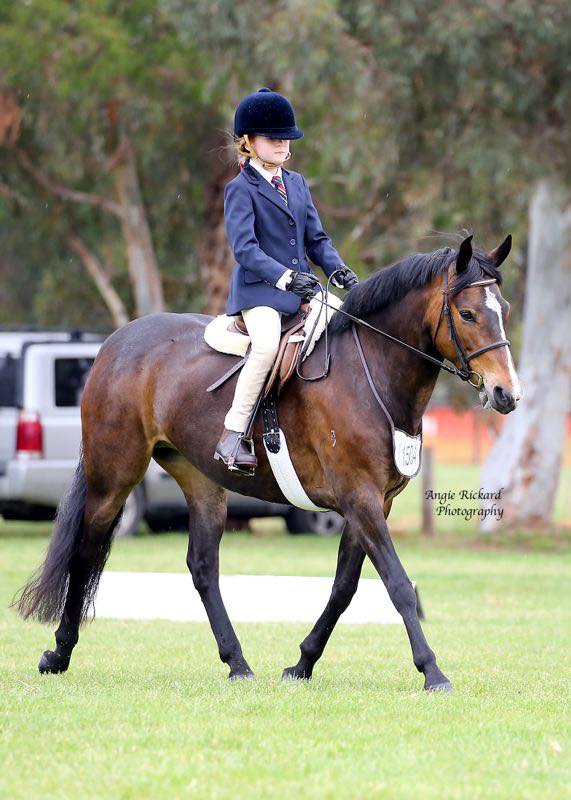
RARE BREEDS TRUST OF AUSTRALIA
powered by TidyHQHorses: New Forest
Horses: New Forest
Origin : New Forest, Hampshire, southern England
Australian Status:

International Status: in its home country listed as a minority breed (recovering/not endangered)
Arrived in Australia: In 1970 3 stallions were imported and registered with the APSB. More imports followed over the next decades. Earlier, some probably came here, no stud book like all breeds in the early and mid nineteenth century meant they would simply be described as ponies; as pony racing was popular in Australia and New Forests were raced in England as well as being good riding ponies. A clear mention is of Burton Sligo, registered 112 in the English Polo and Riding Pony Society's Stud Book; arriving in 1911 for Mr. R. W. G. Gill of Glenreagh, N.S.W. He was described as a New Forest pony. He was dark bay with black points, 13.2hh, 4 years old, and had won prizes in England including the premier prize at the New Forest Show in 1908, 1909 and 1910. He also won polo and riding pony prizes and the Society's Challenge Cup. He was soon winning prizes here, e.g. in 1913 at Grafton. Prizes at Grafton and others such as Coff's Harbour Show, were given for 'Best Colt Foal by Burton Sligo' and 'Best Filly Foal by Burton Sligo' and 'Best mare in foal by Burton Sligo.' In 1915 he was advertised standing at Guyra.
Australian Population: 125 breeding age mares, 178 mares in total. 23 stallions, with an additional 4 at retirement age and 2 colts. 108 Geldings. - 2020
History: One of the mountain and moorland breeds. These ponies have been in the New Forest for about 2,000 years. A hardy breed. Despite the name there is not just forest but a lot of open grazing country in the area and roads run through - providing a traffic hazard to the ponies which are occasionally killed. Although they roam freely the ponies are managed well, belonging to six 'Commoners' - people who have the six grazing rights to the New Forest.
A board of Verderers oversees the Commoners management of the ponies. Agisters are employed by the Verderers to watch over the ponies, one job being to attend to vehicle accidents and put the ponies down if needed. The Agisters also build and keep pounds in good order (yards). Commoners pay fees to mark the ponies as theirs, once payment is received, the Agisters clip the ponies tails in a particular pattern, an annual job; and brand them, a once in a lifetime job. Drifts (musters) are held in autumn and summer. At this time vet checks are done, young colts taken away before they can breed and some ponies to be sold are taken off, and others taken off to be sheltered for winter. Several times a year public sales are held at the yards (called stockades) in Beaulieu Road where the public attend to buy ponies. Until 1930 outside stallions were regularly released to run with the mares, the stallions being taken in for the winter. Racing was popular in the area on these ponies, and they are surprisingly fast.
The ponies get a lot of visitors in the New Forest area, who are strongly encouraged not to feed them, as it makes them hang around roads which is dangerous and to become bullies for food to those who don't know horses. In the picturesque wilds they are a beautiful sight. In Australia there are two registers, one being for "Australian New Forests" which in effect are part breds, being by a New Forest stallion out of any pony mare; this outcross program keeps numbers up in case of pure numbers dropping drastically for any reason; needless to say, these part breds may be three quarters or more New Forest.
Breed traits: Always sought after for their good temperament. Height to 14.2 hh (148cm), no minimum height. Any colour except pinto, spotted, or cream with blue eyes. Blue eyes not permitted. Palomino, light chestnut, cream with dark eyes are not allowed as licenced stallions. White markings only on head and lower limbs. Robust pony with good solid quarters, good flat bone, sloping shoulders. True straight action, not showy. Excellent jumpers.
Uses: Pony club, jumping, dressage, games, polo, racing, hacking, harness.
Breed Organisation: Australian Pony Stud Book http://www.apsb.asn.au/ promotes the New Forest Pony in Australia - ponies must be registered with the APSB to be eligible for breed classes at shows. The New Forest Pony Association of Australia http://www.newforestpony.asn.au/ possibly defunct? -website no longer exists.
Additional Notes: Foal chart for the past decade https://drive.google.com/file/d/1gh04aw4sHqa0kInSNTVQb661uuhX7mQr/view?usp=sharing
Photo: 2018 Vic Pony Stud Show Supreme Champion and 2019 most successful Ridden Exhibit at the Rare Breeds Trust Show at Barastoc. Kindly supplied by Ruth Feltoe.
(population updated 12/06/2020 by A.Y.)
